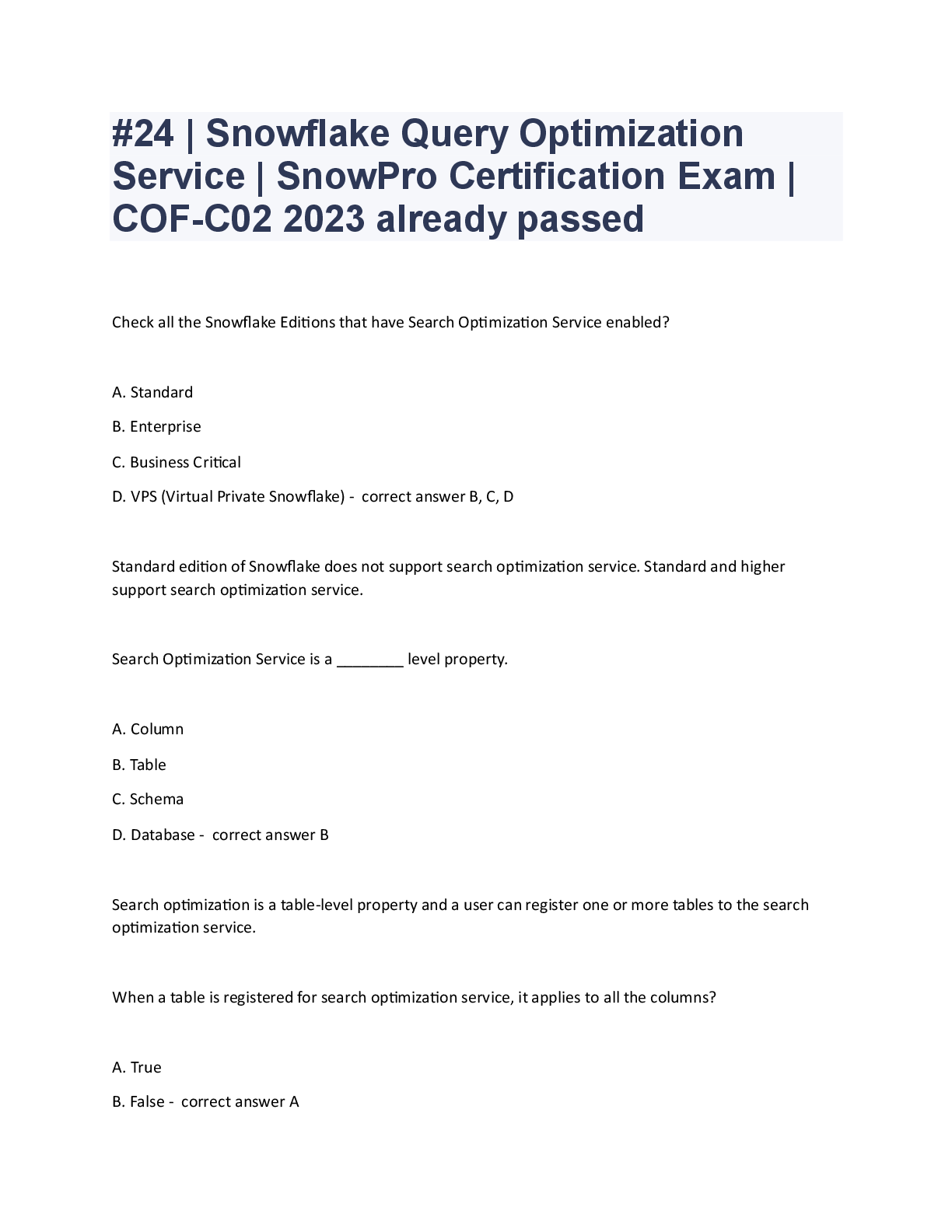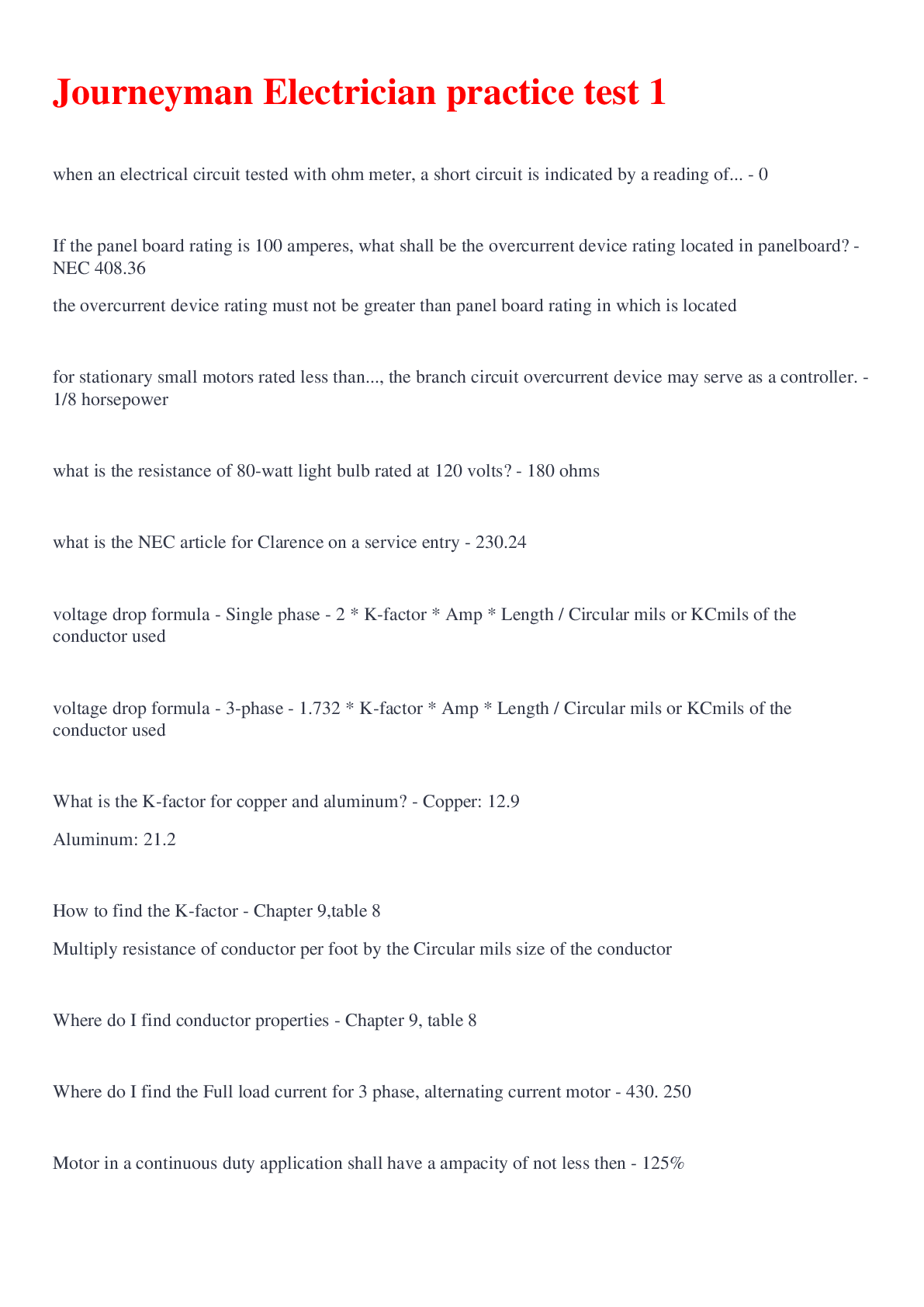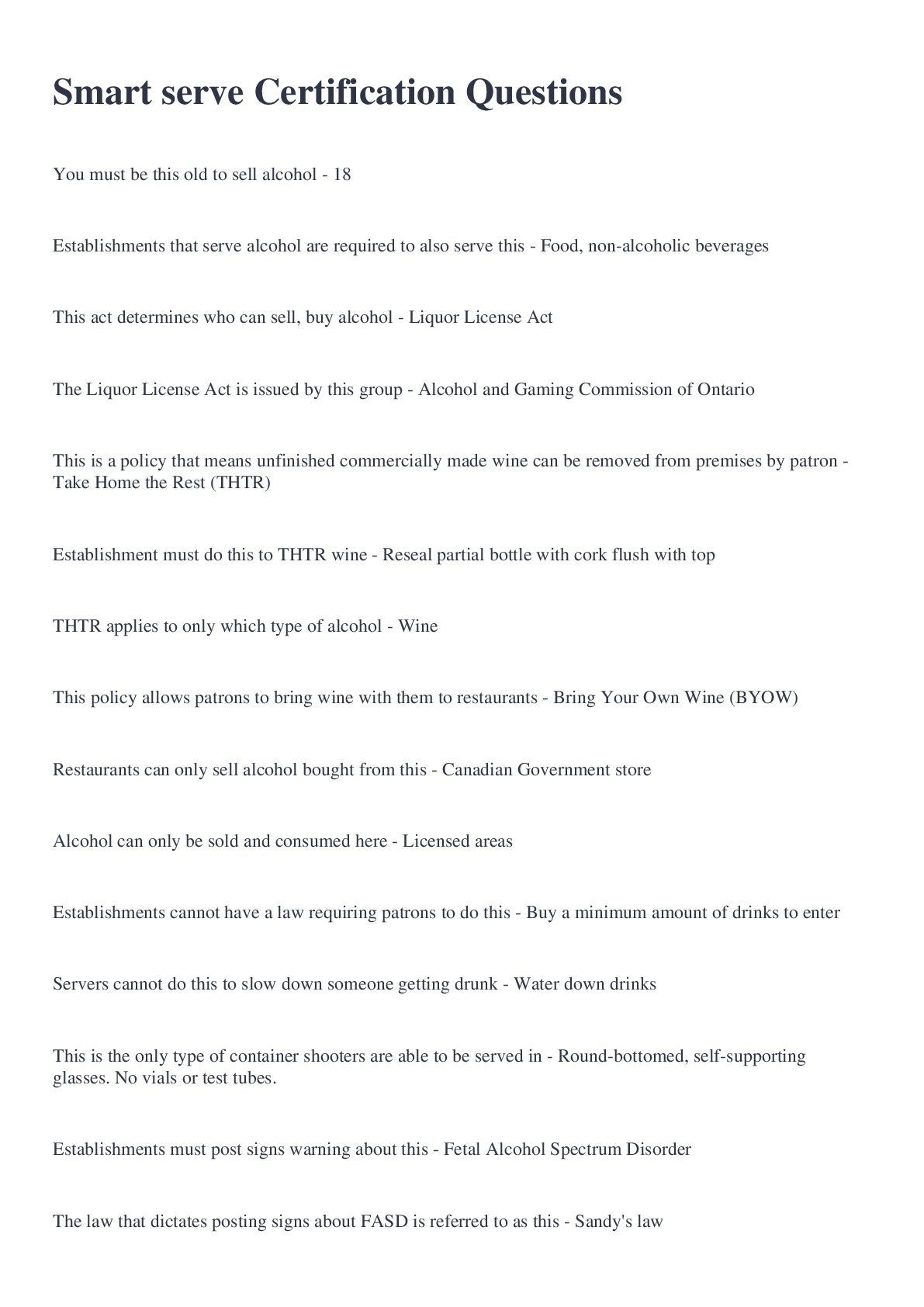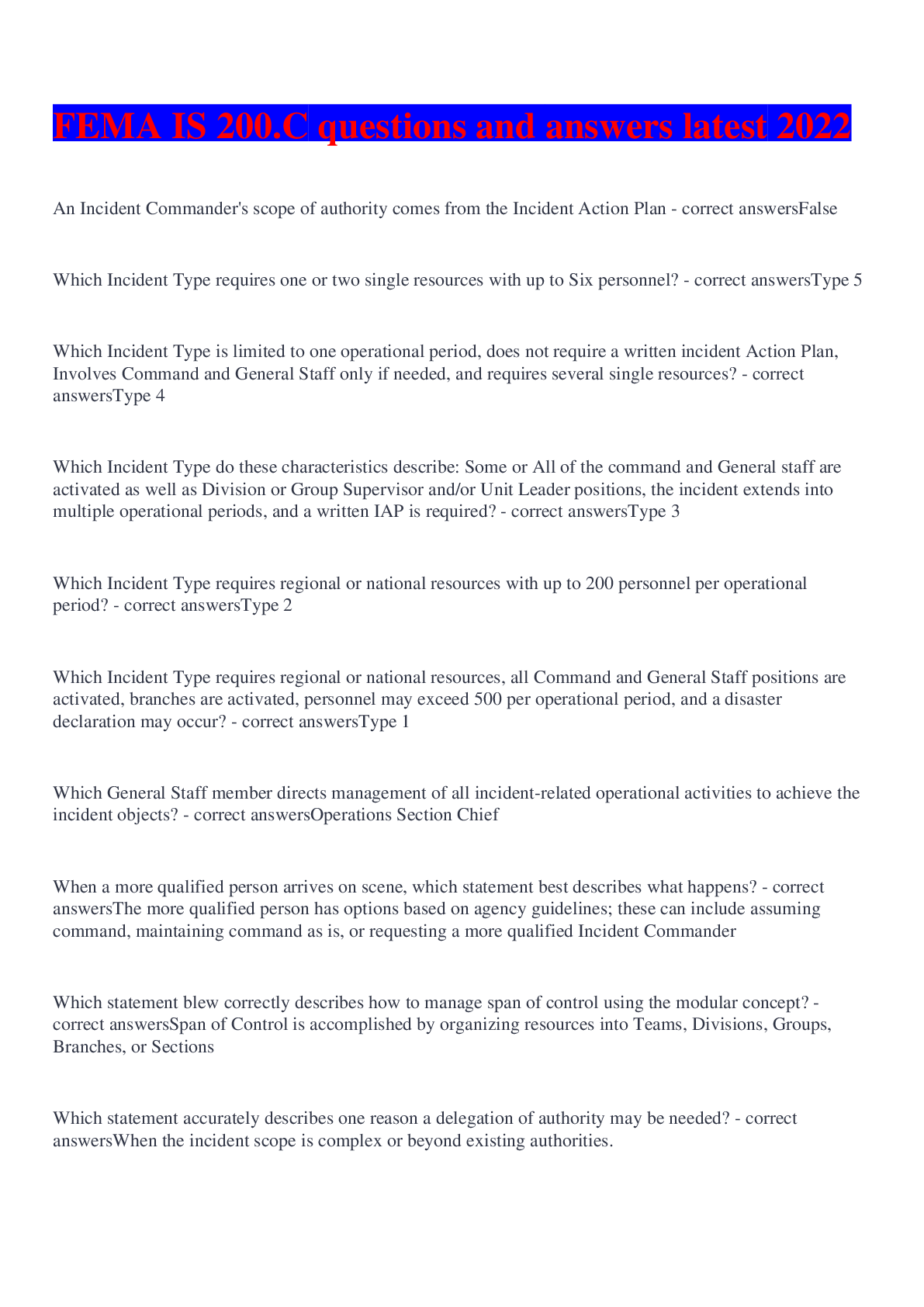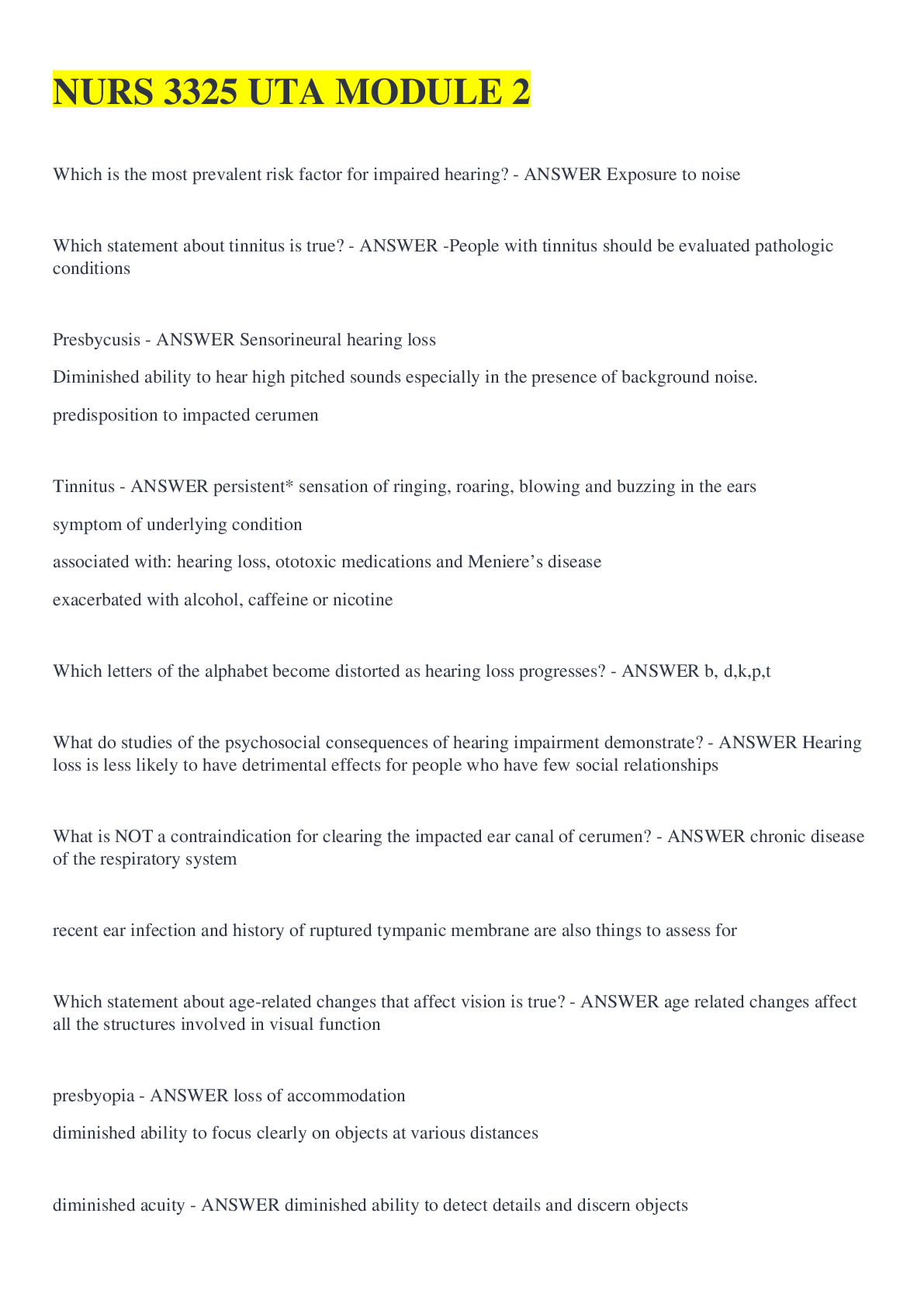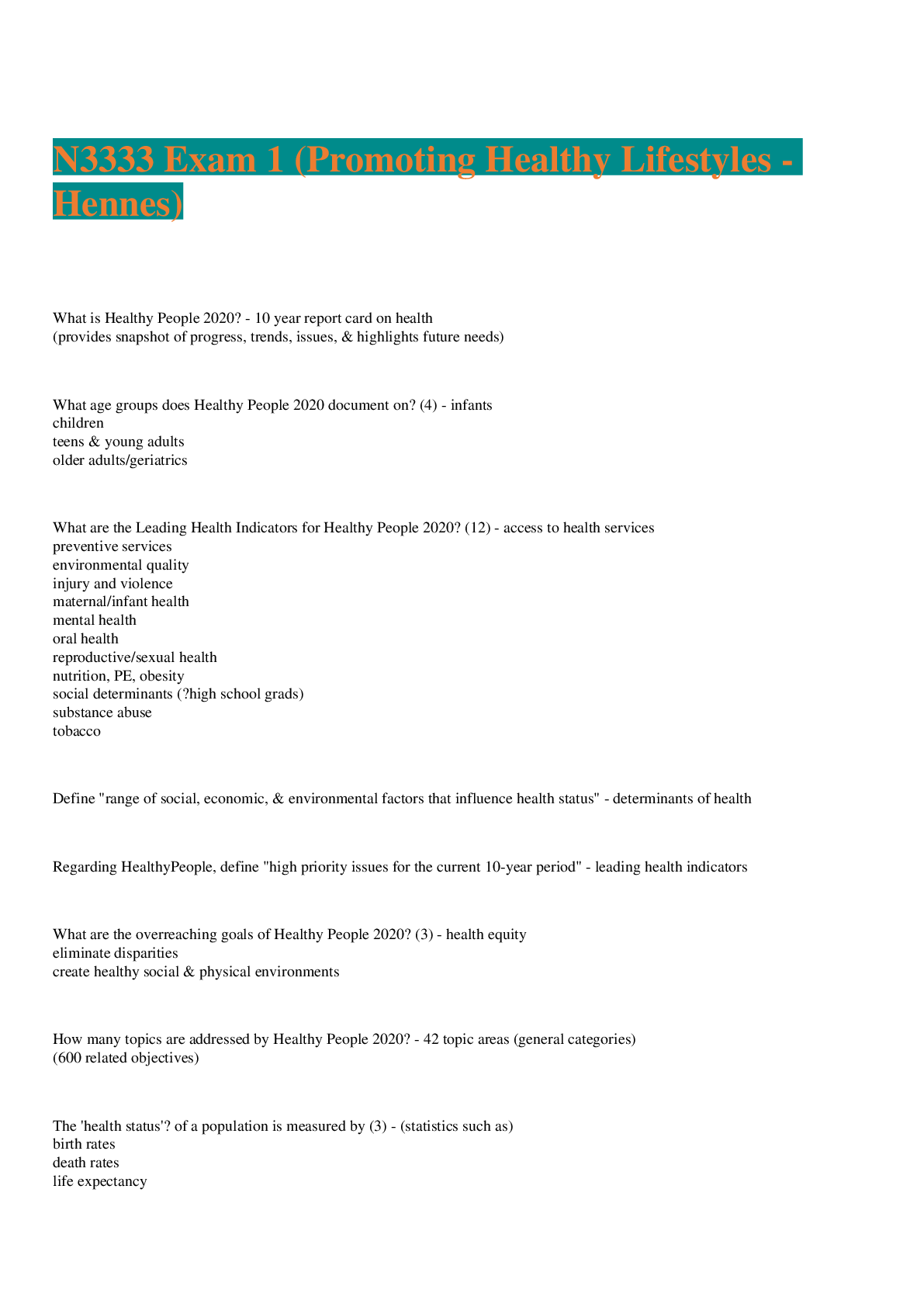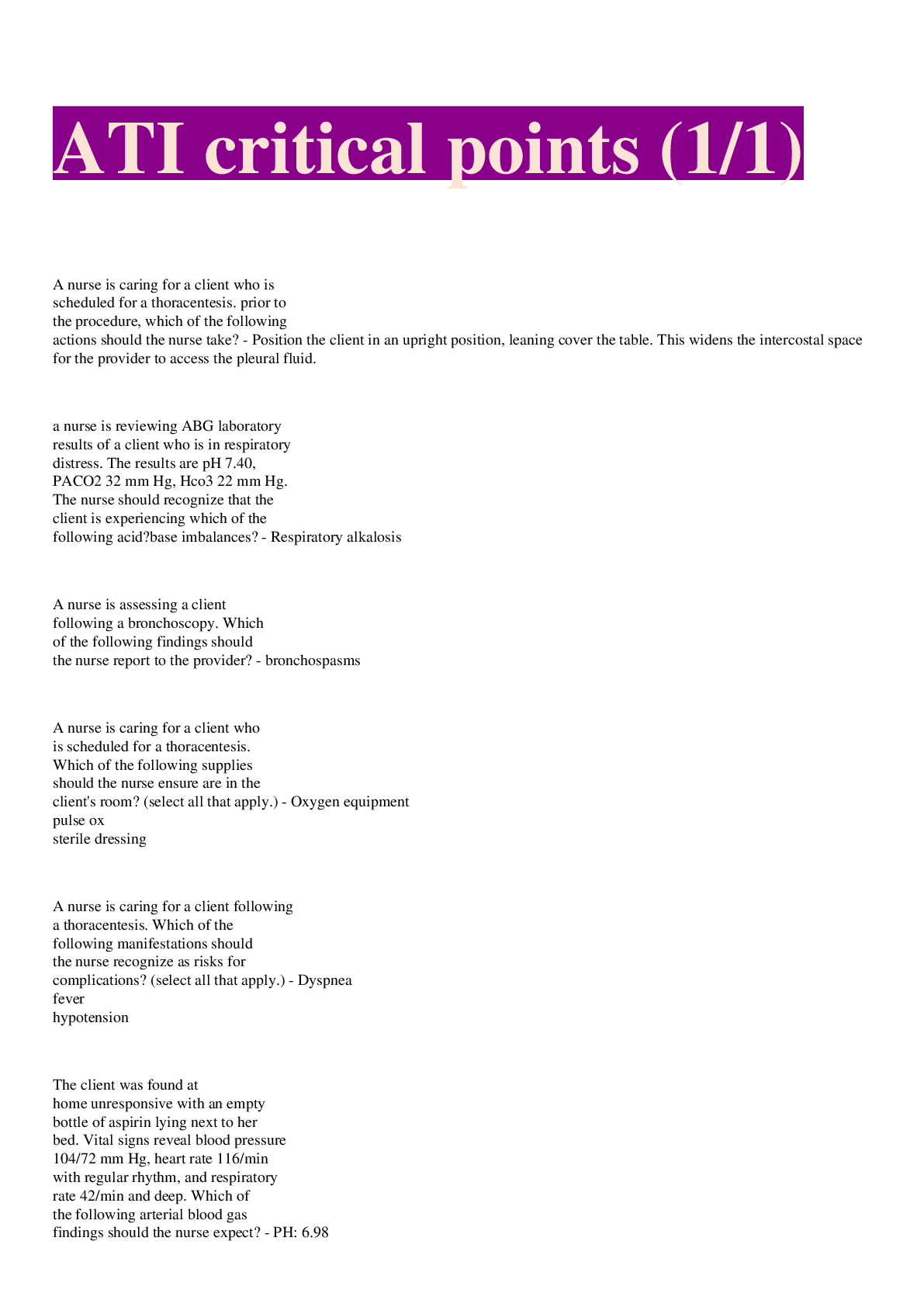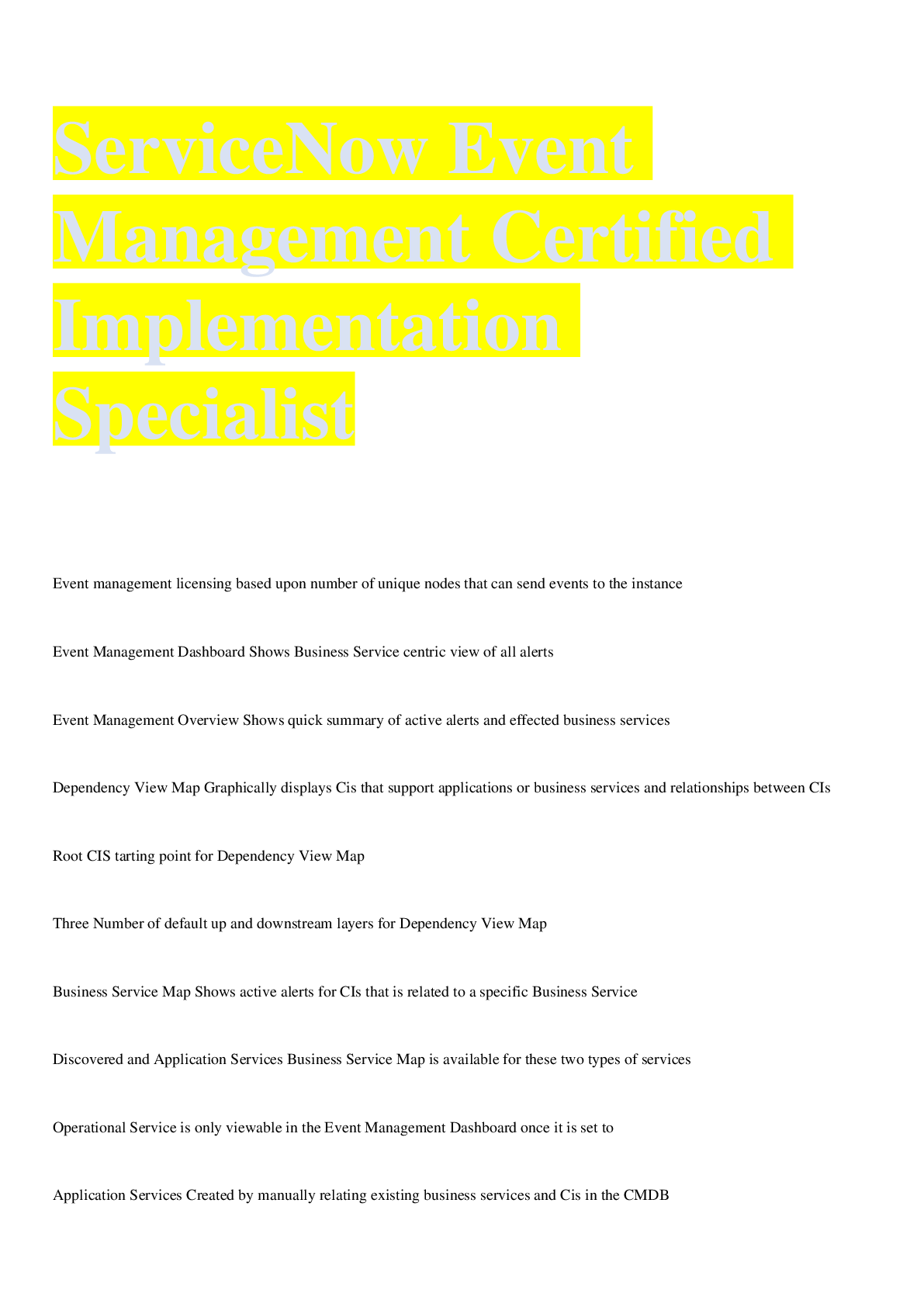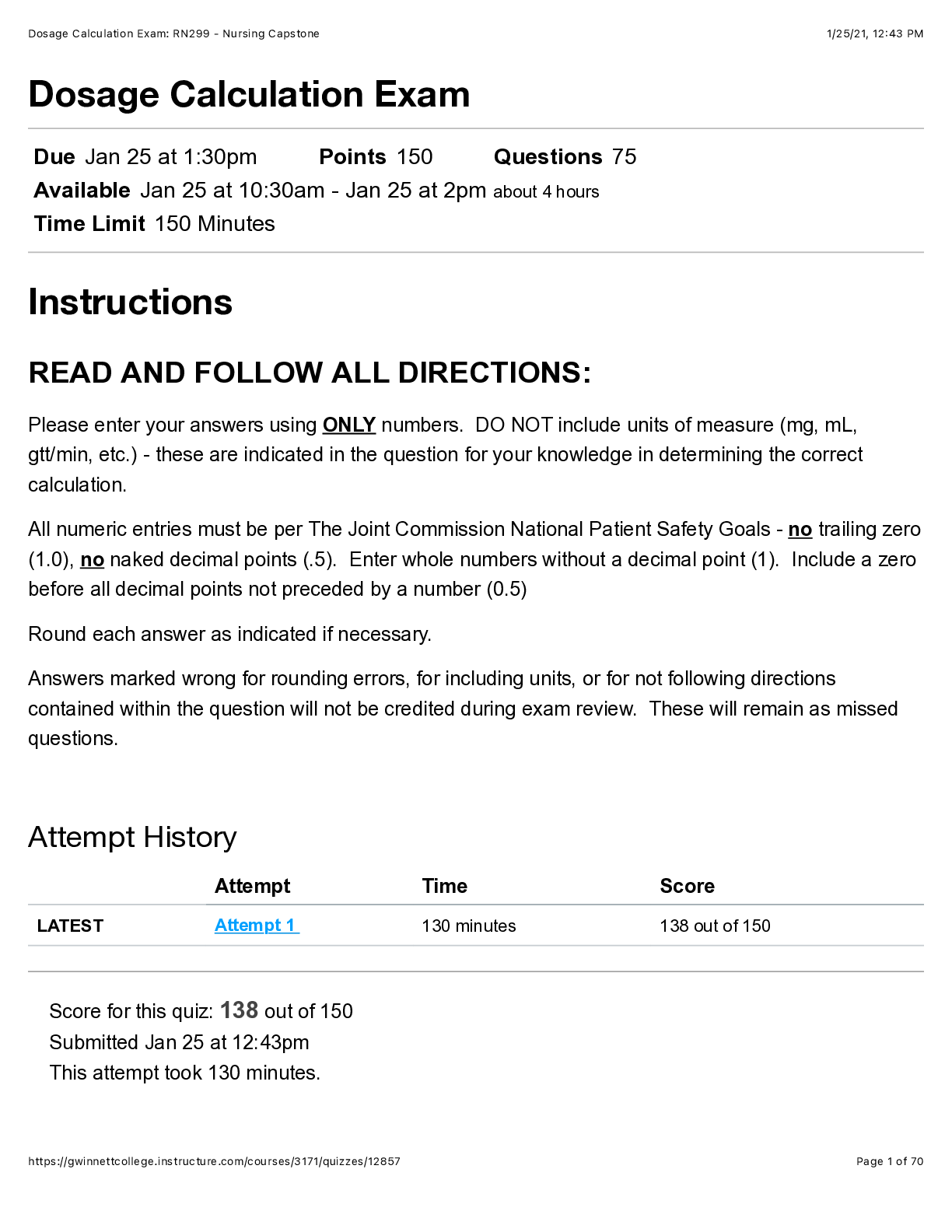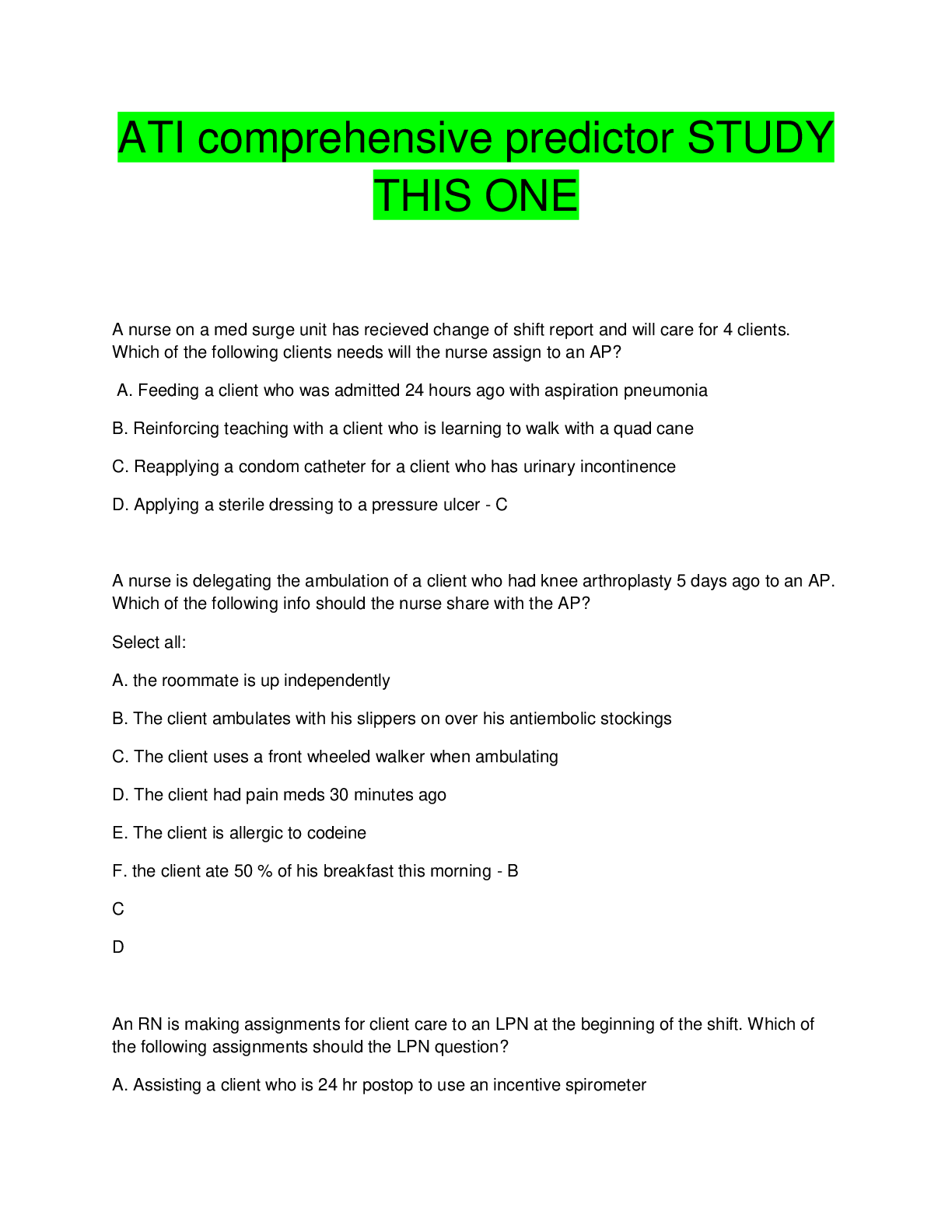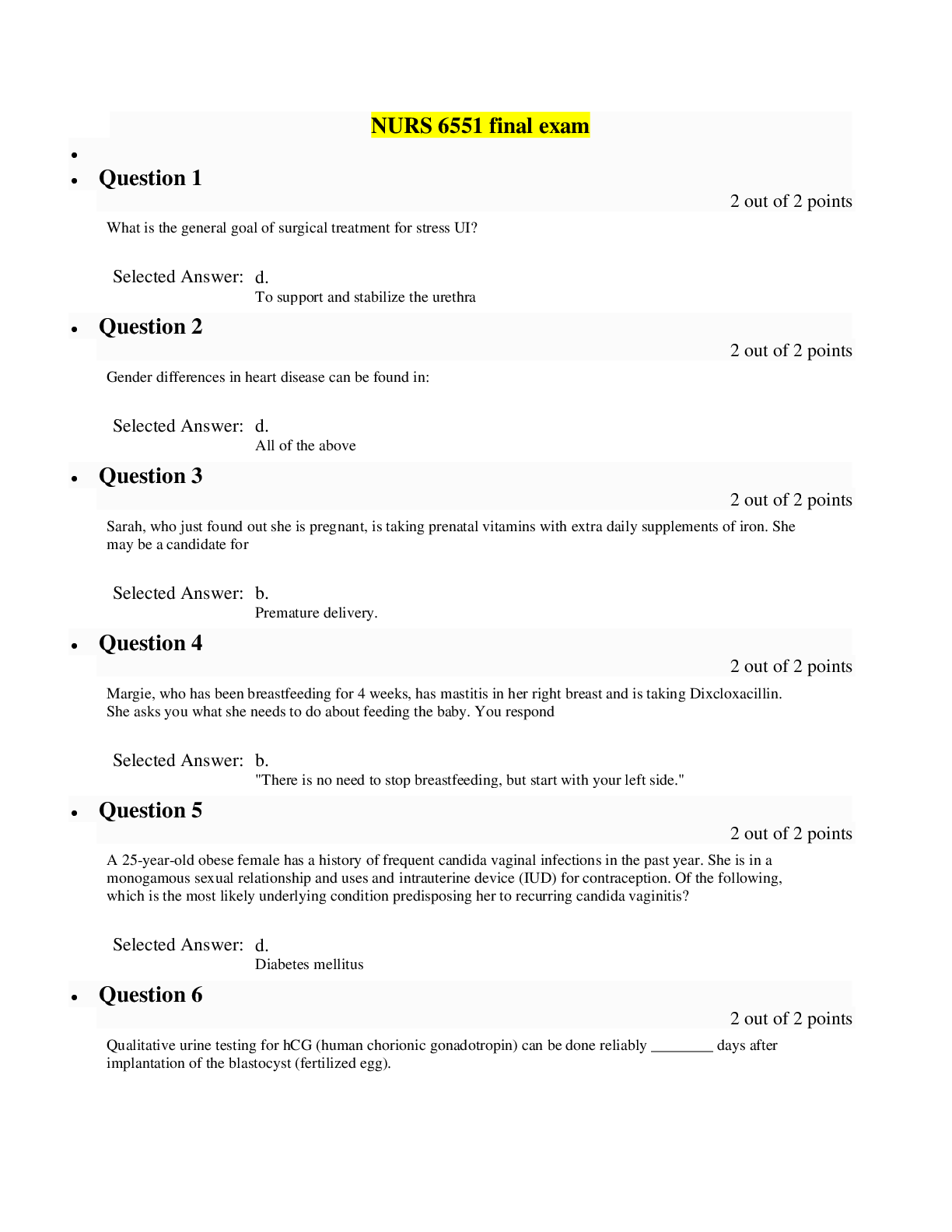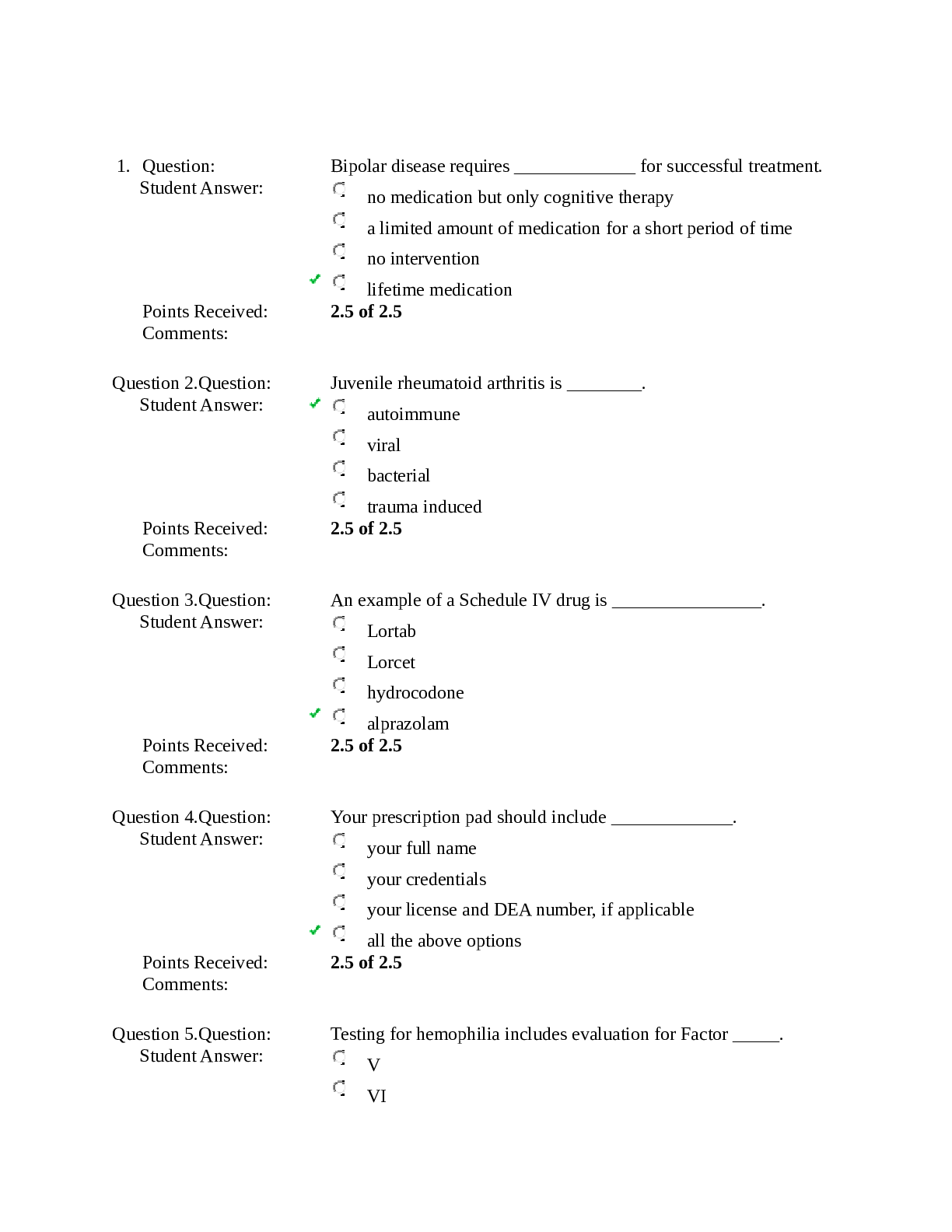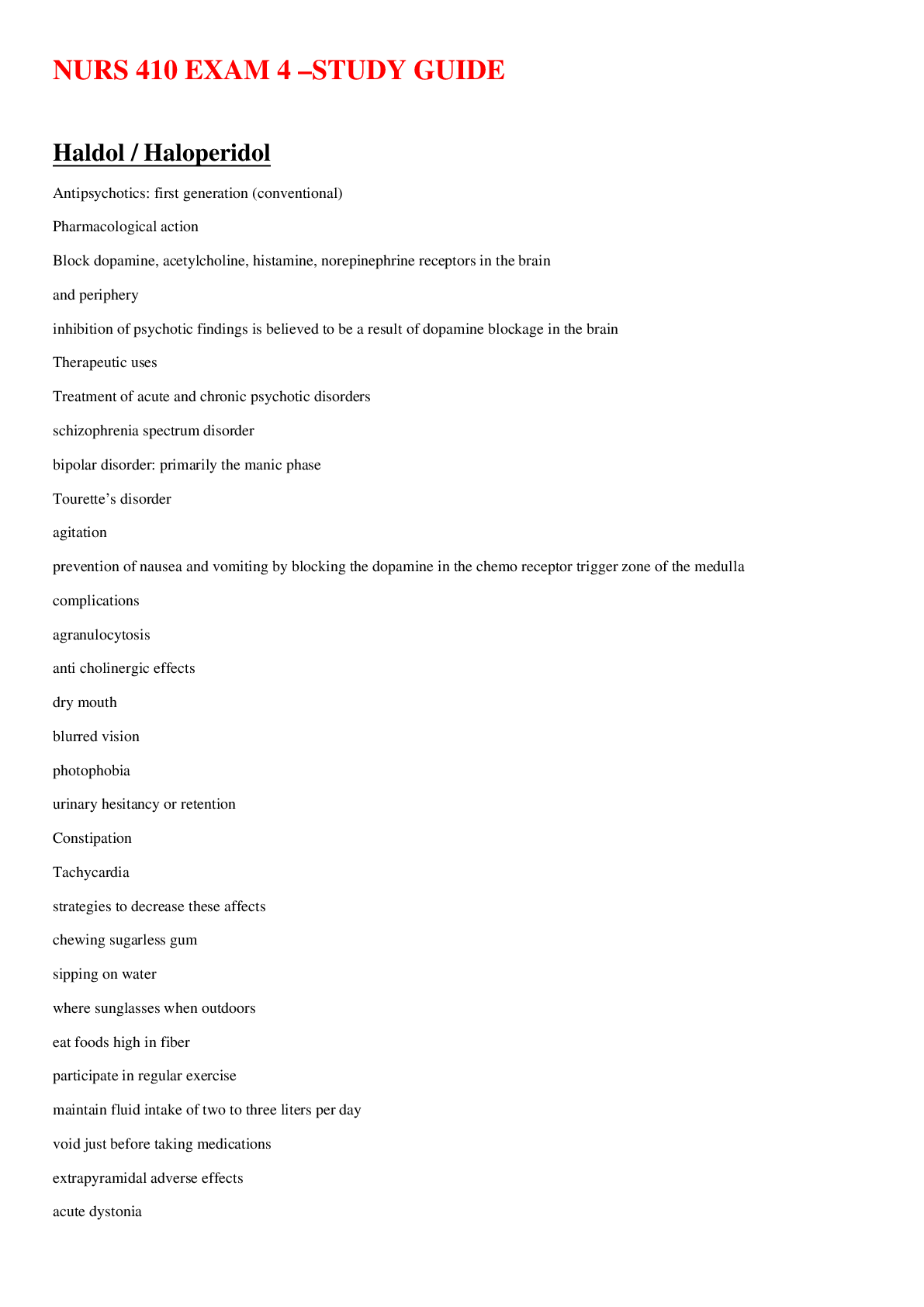NURS 661 Exam 4 – Maryville answered 100% correct(2022/2023)
Document Content and Description Below
Termination of therapay in CBT starts... at the first session. Termination of therapy in IPT starts... around the middle sessions 00:23 01:22 Termination of EMDR should begin whe... n... the Subjective Unit of Disturbance (SUD) scale is at 0 and the Validity of Cognition (VOC) is at 7. Interpersonal therapy is good for... role transition and grief EMDR is good for trauma Things to warn patient about with the initiation of therapy. Increased sx, nightmares, anxiet and depression. Provide encouragement. Do not drastically increase meds. Will improve with processing. Reasons for termination of therapy 1. Patient decision 2. Lack of efficacy. 3. Insurance 4. Therapist leaving 5. Patient relocation 6. Inability to pay 7. Referral to different type of therapy 8. Goals met Stages of development for child's thinking process and age of reasoning. Egocentric thinking before age 6. At age 6 reach an age of reasoning and have more reasoned interrpetation of another person's intention. Teach to self regulate Provide positive reinforcement when they do self-regulate well. Teaching patience. Strength based approach in pediatrics Praise them for doing something themselves and for maintaining control. Giving positive praise. Main structure involved in ADHD Pre-frontal Cortex 3 main characteristics in ADHD Inattention Hyperactivity Impulsivity Best ADHD TX Mild - Therapy Mod-Severe = Meds and psychotherapy beneficial. ADHD Cognition Training Helps with working memory to help to retain more. Trauma Focused-CBT component-based treatment where within a relationship-based approach parents and the child learn how to manage emotions, cope with stress, manage and process thoughts related to the trauma, and enhance feelings of safety. Differentiation Sense of self or degree of wholeness, demonstrated by the ability to separate ones intellectual and emotional functioning. undifferentiated ego mass family system with members possessing low levels of differentiation who are "stuck together" in symbiotic relationships. Triangles Three-person systems that manage tension between two people by bringing in a third person. Can manage more tension than a Dyad (or two person system) that will vacillate between closeness adn distance. Multigenerational Transmission Process transfer of dysfunctional family patterns from one genration to the next. Repeated message "you'r just like your grandmother, irresponsible and unable to care for yourself". Use gnogram to elucidate the pattern. Family Projection Process Parental undifferentiation transmitted to child who cannot separate from the parent. Child become vulnerable and unprotected. Othe rmembers are able to differentiate. Child is emotional extension of the parents. Emotional Cutoff Reducing or cutting off emotional contact with family members in order to manage anxiety and conflict. Reattachment to one's family of origin must occur in order to become a healthy, differentiated adult. Sibling position Person's function position in family hierarchy each child holds predicts roles, functions adn personality characterisitics. 1. Oldest marries youngest feels comfortable w/ more responsiblity and decision making. 2. 2 youngest marry feel overburdeneed by responsibility. 3. 2 oldest overly competitive becasue each will want to be in charge. How to promote self-statements Help them use first person pronowns - self statements. Help get away from generational patterns. "I" Family Structure Invisible set of functional, recurrent patterns that organize the way family members relate to one another. Defines roles, rules, hierarchy, power structures, communication patterns, and decision making functions. subsystems Smaller units within the family structure. Can be spousal, parental, sibling, or extended family. Boundaries Physical or invisible emotional barriers that protect eh inegrity of individual members, subsystems, and families. Regulates contact, maintains individual identity, etc... Enmeshed Family extreme pattern of family organization in which boundaries are diffuse and permeable resulting in a deniable differences and loss of personal autonomy. Members are overly dependent on one another. Interactions intense w/ overload of communication and emotions and great deal of bickering. Disengaged Family extreme pattern of family organization which boundaries are rigid and impermeable, resulting in heightened sense of personal autonomy and independence. Members so disconnected they seem unaware of their impact on each other. Scarce communication, limited support, isolation. Coalition A dysfunctional alliance between 2 family members against a 3rd. -cross-generation (parent-child) -Schism (Child-Parent against parent) -Skewed (spouse overfunctions for underfunctioning spouse for peace) parentification role reversal - child given power and authority that belongs to parent. Boundary Making Therapist tries to distance enmeshed or disengaged subsystems. Father daughter ignoring or leaving out mother. change seats of mother and daughter. Challege disengaged family to come up with solutions to problems of child. Unbalancing Therapist tries to change hierarchical relation [Show More]
Last updated: 2 years ago
Preview 1 out of 5 pages
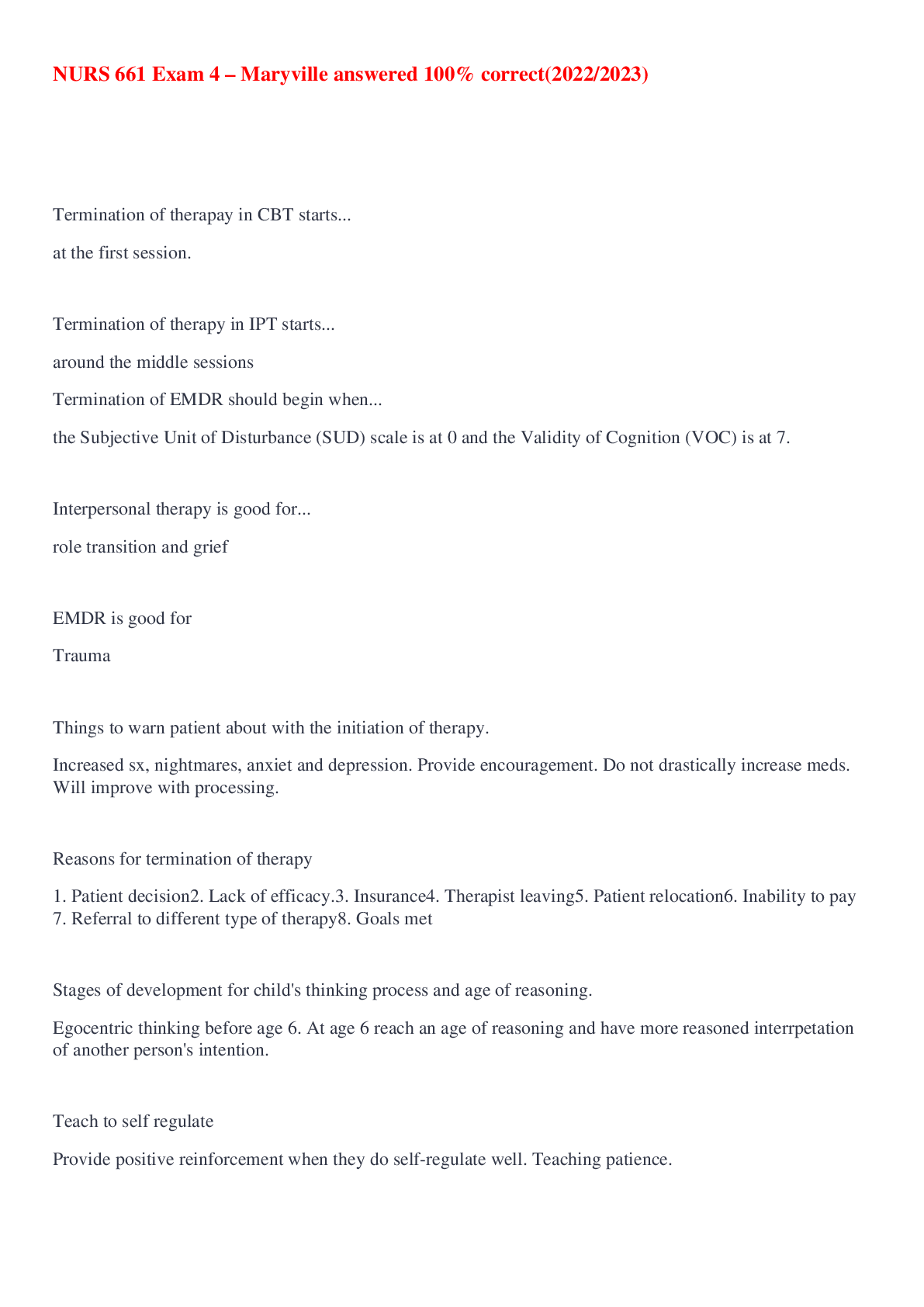
Buy this document to get the full access instantly
Instant Download Access after purchase
Buy NowInstant download
We Accept:

Reviews( 0 )
$14.00
Can't find what you want? Try our AI powered Search
Document information
Connected school, study & course
About the document
Uploaded On
Nov 15, 2022
Number of pages
5
Written in
Additional information
This document has been written for:
Uploaded
Nov 15, 2022
Downloads
0
Views
38

